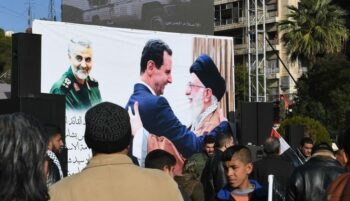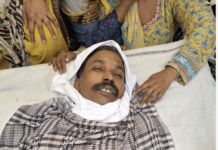The Iranian project has reached an end with the fall of Bashar Al-Assad’s regime on December 8, 2024, and the disband of the “Resistance Axis,” where Iran has drained Syria’s resources for years and worked on imposing its influence through instilling Shia ideologies into the segments of Syrian society, exploiting the dreadful living conditions of the most of Syrian people. In addition, Tehran worked on changing the demography of different areas and impose Iran’s cultural and religious practices.
December 8, 2024, and the disband of the “Resistance Axis,” where Iran has drained Syria’s resources for years and worked on imposing its influence through instilling Shia ideologies into the segments of Syrian society, exploiting the dreadful living conditions of the most of Syrian people. In addition, Tehran worked on changing the demography of different areas and impose Iran’s cultural and religious practices.
Those efforts were met considerable public rejection and led to ostracizing Syrian people, but finally, Iranian-backed militias and affiliated formations have been kicked out from Syria which was one day their major stronghold.
Iran interfered in Syria by sending troops comprising over 65 thousand militiamen of the Iranian Revolutionary Guard Corps and militias of different nationalities to fight alongside former regime forces in Syria.
The Iranians have exploited the extreme poverty of people in Syria and started recruiting many tribesmen in areas on Tehran-Beirut highway in eastern Syria, as well as improving cultural and religious activities which enabled Tehran to dominate large areas of Syrian territory for a long time.
They also generously financed their projects in Syria for years.
The leaders of Iranian-backed militias have supported Iranian-backed Syrian candidates in the parliamentary elections and financed their election campaigns.
Iran has worked on expanding their dominance over state institutions under the cover of Syrian individuals subordinated by Tehran with the aim of dominating Damascus decisions, exploiting authorities granted to affiliated members of the People’s Assembly of Syria.
According to the Syrian constitution, the People’s Assembly is granted several authorities, such as adoption of the general budget, declaration of war and peace and ratification of international treaties. The People’s Assembly of Syria is also authorised to interrogate ministers obscure the confidence of ministers or the entire government.
The People’s Assembly represents the legislative power in Syria, while the president shares this power through issuing legislative decrees.
Since 2022, SOHR has published several reports disclosing the increasing distrust of the Iranians and Hezbollah in Syrian officers following Israeli attacks which targeted positions of Iranian-backed militias in Syria and assassination of commanders of the “Resistance Axis,” which simultaneously increased with the Israeli war in Gaza and Lebanon. This also coincided with arrests of officers, soldiers and militiamen who were investigated over accusations of spying and leaking information to hostile parties.
Former regime security services, the Lebanese Hezbollah and the Iranian Revolutionary Guard Corps also turned to arrest and investigate senior officers, after confusions which followed the death of top commanders of the “Resistance Axis” in the Israeli attack on the Iranian embassy in Damascus in April 2024.
Tehran dealt as if Syria was Iran’s 35th province and a bridge linking Iran and the Mediterranean sea and the Lebanese Hezbollah in Lebanon, where Tehran saw that Hezbollah was the major power that could achieve the objectives of the Iranian project which was designed to impose and expand Iran’s influence over region. — Syrian Observatory for Human Rights





